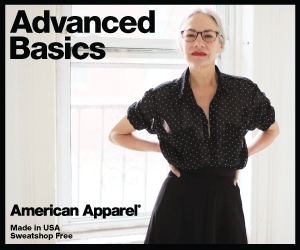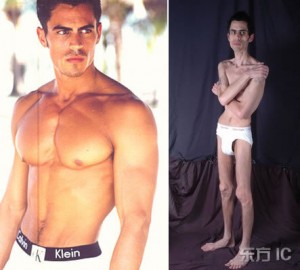What sticks out in your mind when you think about the fashion industry? For me, it is the prevalence of eating disorders and horror stories about models ending up in the hospital because they starve themselves in order to stay at the industries desired weight. Images of sickly thin, emaciated models are one of the first things that pop into my head. I am slightly biased about this though. The fashion industry has actually improved in widening the variety of models. There is still a long way to go, but the industry isn’t all bad.
This is 62-year-old Jacky O’Shaughnessy. She has been a model for American Apparel since 2011, and has more recently modeled their new line of lingerie. Her photos were posted on American Apparel’s social media websites with the caption “Sexy has no expiration date.” It is a huge step for the fashion industry to pick a 62-year-old model over a younger woman. There is beauty in women of all ages, and it is fantastic that it is being acknowledged.
Gabi Gregg, a plus-size fashion blogger, collaborated with Swimsuits For All and designed two piece swimsuits that come in sizes 10-24. The bikini been nicknamed the ‘fatkini’ and comes in bright neon colors and fun patterns. Gabi Gregg is really passionate about body acceptance, no matter the size, and her swimsuits gave many women to confidence boost they needed to wear a bikini.
Pictures like this, comparing Dove’s Real Beauty campaign and the Love My Body campaign by Victoria’s Secret, have received a lot of criticism on the internet. There are some people who will bash the Victoria’s Secret models for being “too skinny” and others who will insult how the Dove models look. I feel like this is totally uncalled for. The models from campaigns are beautiful. This picture just shows the diversity that needs to be present in the fashion industry.
Models of all shapes, sizes, ethnicity, etc. should be in national campaigns in order to showcase diversity. The way the fashion industry is right now, models have a stereotypical appearance; skinny, tall, and often lighter complexions. Everybody look different, so shouldn’t models portray the different facets of beauty? Because beauty has many faces.











